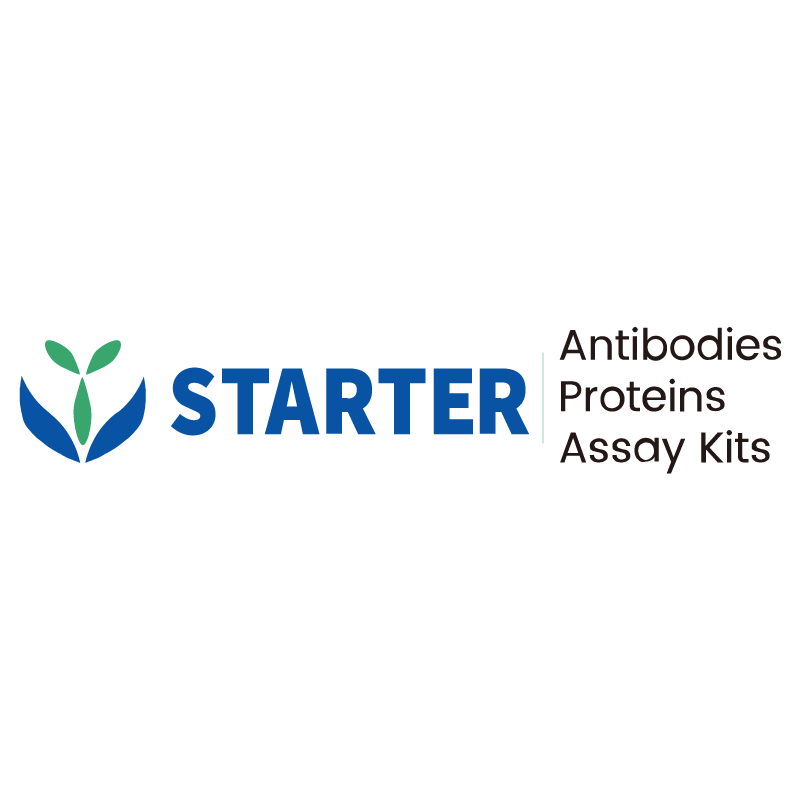WB result of GSDMD Recombinant Rabbit mAb
Primary antibody: GSDMD Recombinant Rabbit mAb at 1/1000 dilution
Lane 1: PC-3 whole cell lysate 20 µg
Lane 2: A431 whole cell lysate 20 µg
Lane 3: Jurkat whole cell lysate 20 µg
Secondary antibody: Goat Anti-rabbit IgG, (H+L), HRP conjugated at 1/10000 dilution
Predicted MW: 53 kDa
Observed MW: 53 kDa
Product Details
Product Details
Product Specification
| Host | Rabbit |
| Antigen | GSDMD |
| Synonyms | Gasdermin-D; Gasdermin domain-containing protein 1; DFNA5L; GSDMDC1 |
| Location | Cytoplasm, Secreted, Mitochondrion, Cell membrane |
| Accession | P57764 |
| Clone Number | S-3267 |
| Antibody Type | Recombinant mAb |
| Isotype | IgG |
| Application | WB, IHC-P |
| Reactivity | Hu, Ms, Rt |
| Purification | Protein A |
| Concentration | 0.5 mg/ml |
| Conjugation | Unconjugated |
| Physical Appearance | Liquid |
| Storage Buffer | PBS, 40% Glycerol, 0.05% BSA, 0.03% Proclin 300 |
| Stability & Storage | 12 months from date of receipt / reconstitution, -20 °C as supplied |
Dilution
| application | dilution | species |
| WB | 1:1000 | Hu, Ms, Rt |
| IHC-P | 1:250 | Hu |
Background
Gasdermin D (GSDMD) is a crucial protein within the gasdermin family, playing a key role in executing pyroptosis, a form of lytic, inflammatory cell death. The full-length GSDMD protein is inactive and consists of a 31 kD N-terminal pore-forming domain and a 22 kD C-terminal suppression domain. Upon activation by caspases such as caspase-1, -4, -5, or -11, the interdomain linker is cleaved, releasing the N-terminal fragment (GSDMD-NT) from the inhibitory C-terminal domain. The freed GSDMD-NT translocates to the plasma membrane, oligomerizes, and forms pores with an inner diameter of approximately 10–14 nm, leading to cell lysis, cytokine release (such as IL-1β and IL-18), and disruption of ion and water balance. This pore formation is a critical step in mediating inflammation and immune responses. GSDMD is also implicated in various diseases, including sepsis, myocardial ischemia/reperfusion injury, and certain cancers. Research on selective GSDMD inhibitors is ongoing, aiming to block pyroptosis and reduce inflammation in pathological conditions.
Picture
Picture
Western Blot
WB result of GSDMD Recombinant Rabbit mAb
Primary antibody: GSDMD Recombinant Rabbit mAb at 1/1000 dilution
Lane 1: RAW264.7 whole cell lysate 20 µg
Lane 2: NIH/3T3 whole cell lysate 20 µg
Secondary antibody: Goat Anti-rabbit IgG, (H+L), HRP conjugated at 1/10000 dilution
Predicted MW: 53 kDa
Observed MW: 53 kDa
WB result of GSDMD Recombinant Rabbit mAb
Primary antibody: GSDMD Recombinant Rabbit mAb at 1/1000 dilution
Lane 1: PC-12 whole cell lysate 20 µg
Secondary antibody: Goat Anti-rabbit IgG, (H+L), HRP conjugated at 1/10000 dilution
Predicted MW: 53 kDa
Observed MW: 55 kDa
Immunohistochemistry
IHC shows positive staining in paraffin-embedded human stomach. Anti-GSDMD antibody was used at 1/250 dilution, followed by a HRP Polymer for Mouse & Rabbit IgG (ready to use). Counterstained with hematoxylin. Heat mediated antigen retrieval with Tris/EDTA buffer pH9.0 was performed before commencing with IHC staining protocol.
IHC shows positive staining in paraffin-embedded human gastric cancer. Anti-GSDMD antibody was used at 1/250 dilution, followed by a HRP Polymer for Mouse & Rabbit IgG (ready to use). Counterstained with hematoxylin. Heat mediated antigen retrieval with Tris/EDTA buffer pH9.0 was performed before commencing with IHC staining protocol.
Negative control: IHC shows negative staining in paraffin-embedded human cardiac muscle. Anti-GSDMD antibody was used at 1/250 dilution, followed by a HRP Polymer for Mouse & Rabbit IgG (ready to use). Counterstained with hematoxylin. Heat mediated antigen retrieval with Tris/EDTA buffer pH9.0 was performed before commencing with IHC staining protocol.
IHC shows positive staining in paraffin-embedded human ovarian cancer. Anti-GSDMD antibody was used at 1/250 dilution, followed by a HRP Polymer for Mouse & Rabbit IgG (ready to use). Counterstained with hematoxylin. Heat mediated antigen retrieval with Tris/EDTA buffer pH9.0 was performed before commencing with IHC staining protocol.


